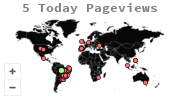Originality and Unpublished: Reflections on the Admissibility of Academic Texts
DOI:
https://doi.org/10.23925/2178-0080.2022v24i1.62059Keywords:
Originality, Admissibility, Unpublished the academic textAbstract
The paper discusses researchers' concern to ensure their work is original and unpublished, avoiding the risk of rejection in the review process. Originality is seen as creating new and innovative ideas, while unpublished refers to presenting arguments not published elsewhere. The definition of originality may vary in different fields of knowledge, but it generally involves giving new results, theories, or methods. On the other hand, being unpublished is simpler, referring to the lack of prior publication of the work. The text highlights originality's importance in advancing knowledge, academic integrity, preventing plagiarism, and promoting innovation. Additionally, determining factors of being unpublished are discussed, such as the acceptance of papers presented at conferences and preliminary dissemination through preprints.
References
Angell, M., & Kassirer, J. P. (1991). The Ingelfinger Rule Revisited. The New England Journal of Medicine, 325(19), 1371-1373.
Bicas, H. E. A. (2008). Ineditismo, Originalidade, Importância, Publicidade, Interesse e Impacto de Artigos Científicos. Arquivos Brasileiros de Oftalmologia, 71(4), 473-4. https://doi.org/10.1590/S0004-27492008000400001
Brand, P. Z. (2015). The Role of Luck in Originality and Creativity. The Journal of Aesthetics and Art Criticism, 73(1), 31–55. https://doi.org/10.1111/jaac.12136
Clarke, G., & Lunt, I. (2014). The Concept of ‘Originality’ in the Ph.D.: How is it Interpreted by Examiners? Assessment & Evaluation in Higher Education, 39(7), 803-820. https://doi.org/10.1080/02602938.2013.870970
Gill, P., & Dolan, G. (2015) Originality and the PhD: what is it and how can it be demonstrated? Nurse Researcher. 22(6), 11-15.
Guetzkow, J., & Lamont, M. (2004). Whati s Originalityin the Humanities and the Social Sciences. American Sociological Review, 69(2), 19o-212. http://www.jstor.org/stable/ 3593084
Hunt, S. D. (2002). Foundations of Marketing Theory: Toward a General Theory of Marketing. M. E. Sharpe.
Kamp, M.-T. V., Admiraal, W., & Rijlaarsdam, G. (2016). Becoming Original: Effects of Strategy Instruction. Instructional Science: An International Journal of the Learning Sciences, 44(6), 543-566. https://doi.org/10.1007/s11251-016-9384-y
Miglioli, S. (2012). Originalidade e ineditismo como requisitos de submissão aos periódicos científicos em Ciência da Informação. Liinc em Revista, 8(2), 378-388. http://hdl.handle. net/10760/18282
Owen, S. V., & Baum, S. M. (1985). The Validity of Measurement of Originality. Educational and Psychological Measurement, 45(4), 939-944. https://doi.org/10.1177/00131644854 54026
Pavoine, S., Ollier, S., & Dufour, A-B. (2005). Is the Originality of a Species Measurable? Ecology Letters, 8, 579–586. https://doi.org/8:579–586.10.1111/j.1461-0248.2005.00 752.x
Penfold, N. C., & Polka, J. K. (2020). Technical and social issues influencing the adoption of preprints in the life sciences. PLoS Genetics, 16(4), e1008565. https://doi.org/ 10.1371/journal.pgen.1008565
Soderberg, C. K., Errington, T. M., Nosek, B. A. (2020). Credibility of preprints: an interdisciplinary survey of researchers. Royal Society Open Science, 7: 201520. http://dx.doi.org/10.1098/rsos.201520
Stigler, G. J. (1955). The Nature and Role of Originality in Scientific Progress. Economica, 22(88), 293-302. http://www.jstor.org/stable/2551184 https://doi.org/10.2307/ 2551184
Szmigin, I., & Foxall, G. (2000). Interpretive Consumer Research: How Far Have We Come? Qualitative Market Research, 3(4), 187-197. http://dx.doi.org/10.1108/13522750010 349288
Vagarinho, J. P. (2019). Como identificar a originalidade num artigo científico ou numa tese de doutoramento? Educar em Revista, 35(73), 181-20. https://doi.org/10.1590/0104-4060.58892
Downloads
Published
How to Cite
Issue
Section
License
Copyright (c) 2022 Francisco Antonio Serralvo

This work is licensed under a Creative Commons Attribution 4.0 International License.
Authors who publish in this journal agree to the following terms:
1. Authors retain the copyright and grant the journal the right of first publication, with the work licensed simultaneously under a Creative Commons Attribution License after publication, allowing the sharing of work with acknowledgment of the authorship of the work and initial publication in this journal.
2. Authors are authorized to take additional contracts separately, for non-exclusive distribution of the version of the work published in this journal (eg publish in institutional repository or as a book chapter), with acknowledgment of authorship and initial publication in this journal.
3. Authors are allowed and encouraged to publish and distribute their work online (eg in institutional repositories or on their personal page) at any point before or during the editorial process, as this can generate productive changes, as well as increase the and the citation of the published work (See The Effect of Free Access).







